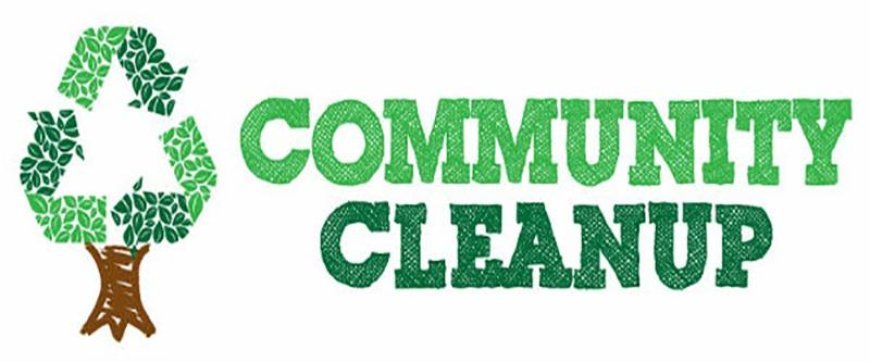Community Cleanup: Plan & Execute with Ease

A cleaner community is a stronger community. With pollution and waste on the rise, more neighborhoods are realizing the power of community cleanup planning. Whether it’s a small local park or a large urban street, organizing people to come together and clean up makes a lasting difference—not just for the environment, but for the spirit of your community.
If you're wondering how to plan a community cleanup, you're not alone. Many residents want to make a change but don't know where to start. Fortunately, with the right steps and a little enthusiasm, any neighborhood can turn a messy corner into a clean, inviting space.
Why Community Cleanups Matter
Community cleanups aren’t just about trash—they're about transformation. A successful community cleanup brings people together, builds relationships, and gives everyone a sense of pride in their surroundings. It also improves public health, boosts property values, and fosters a sense of local responsibility.
Whether you're hosting a volunteer cleanup event or joining a community beautification project, your efforts ripple outward.
1. Set Clear Goals and Pick the Right Spot
Start with a simple question: What do you want to achieve?
Are you trying to:
· Remove litter from sidewalks?
· Clean up a local park?
· Organize a full urban cleanup campaign?
Once your goal is clear, choose a location that matches. Pick spots that are visible and need attention. This could be a street corner, a public playground, or even an overlooked alley. When you organize neighborhood cleanup events with intention, people are more likely to join and support the mission.
2. Get the Right People Involved
You can’t do it alone—and you shouldn't. Cleanup events thrive on community support. Connect with:
· Local residents
· Schools and student groups
· Environmental organizations
· Churches and community centers
· Local businesses
Explain your vision and invite them to join. Encourage them to promote the local cleanup initiative on social media and bulletin boards. The more people you bring together, the greater the impact.
3. Choose a Date and Make It Count
Timing is everything. Avoid holidays, exam seasons, and extreme weather. Weekends usually work best.
Once you have a date, lock it in and start spreading the word. Create simple posters, flyers, and social media posts with all the details: time, location, what to bring, and what to expect. Consider setting up a registration form to estimate turnout.
4. Gather Supplies and Safety Gear
A well-prepared team is a safe and efficient team. Depending on the size and scope of your community trash removal project, you'll need:
· Trash bags (strong and eco-friendly)
· Gloves (reusable or disposable)
· Rakes and brooms
· Dustpans, buckets, or wheelbarrows
· Safety vests or bright clothing
· First-aid kits
· Water and snacks
Make sure volunteers understand how to safely dispose of hazardous materials, like glass or needles, and have clear guidelines for what to clean and what to leave alone.
5. Promote the Event (and the Cause)
Promotion is more than just telling people where to show up. It's about building excitement and making people feel like they’re part of something bigger.
Leverage local:
· Facebook groups
· Instagram pages
· WhatsApp or Telegram community chats
· Local newspapers or radio stations
Encourage people to bring family and friends. Use hashtags like #CommunityCleanupPlanning or #NeighborhoodCleanupTips to track participation and raise awareness.
This guide on how to plan a community cleanup offers additional tips that can help you structure your efforts more effectively and reach the right audience.
6. Execute with Energy and Leadership
On the day of your volunteer cleanup event, arrive early to set up and welcome volunteers. Create check-in points and assign small teams with clear roles:
· Team A: Trash pick-up
· Team B: Sweeping and raking
· Team C: Bag collection and transport
· Team D: Water and support station
Offer a short safety talk before beginning. Let everyone know how long the cleanup will last, where to bring full bags, and who to talk to if they need help.
Don't forget music! A small speaker playing positive tunes can boost morale.
7. Celebrate and Reflect
When the work is done, don’t just pack up and leave—celebrate! Offer refreshments, thank volunteers personally, and take a group photo. Consider handing out small recognition tokens like:
· Certificates of appreciation
· Local business gift cards
· Social media shout-outs
This recognition strengthens your community beautification project and encourages more participation next time.
8. Proper Disposal and Follow-Up
Once the cleanup is complete, make sure all collected waste is disposed of properly. Contact your local sanitation department beforehand to arrange for trash pickup or dumpster access.
Send a follow-up email or post on social media thanking everyone who participated. Share before-and-after photos and stats (e.g., “Over 200 lbs of waste removed!”). This transparency builds trust and motivation.
9. Build on Momentum
A single event is powerful, but consistency is transformational.
· Host monthly or quarterly cleanups
· Involve schools for educational partnerships
· Nominate a "clean block" of the month
· Apply for local funding or sponsorships
By turning your environmental cleanup drive into a regular local cleanup initiative, you shift from a one-time impact to a long-term movement.
10. Inspire Neighboring Communities
Use your success story to inspire others. Reach out to nearby communities or towns and share your strategy. Offer to help them organize neighborhood cleanup events of their own.
You might even start a regional urban cleanup campaign, building a network of changemakers focused on shared responsibility.
Conclusion: Small Steps, Big Change
Community cleanup planning isn’t just about cleaning—it's about care, connection, and commitment. Every plastic wrapper picked up and every leaf swept away is part of a larger statement: We care about our neighborhood.
From choosing the right spot to celebrating your volunteers, each step contributes to a better, brighter, and more beautiful community. With a clear plan, passionate people, and consistent effort, your neighborhood can become a model for what local action truly looks like.
Whether you're just learning how to plan a community cleanup or you're already knee-deep in a long-term beautification effort, remember: the smallest step can spark the biggest change.
???? Learn more, take action, and become part of a cleaner tomorrow by visiting our WEBISTE.
What's Your Reaction?




























































